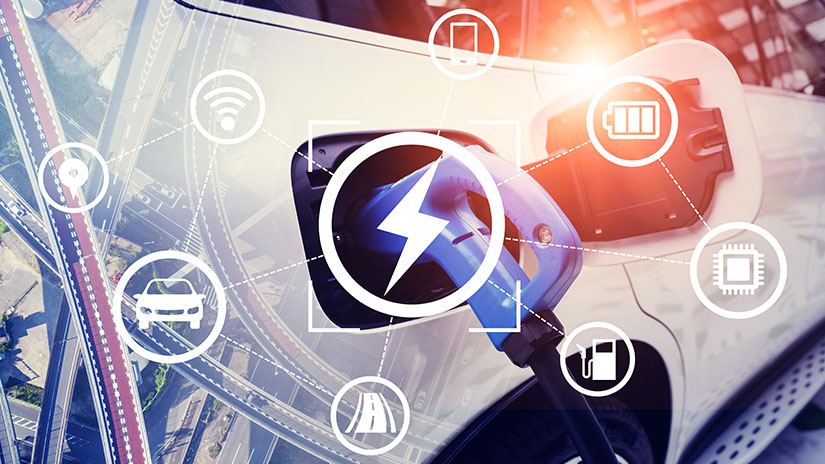By Leonardo Impagliazzo, Chief Director, Digital, Innovation & Chief Lumada Business Officer, Hitachi Rail
In spring 2020, with fewer cars on the road worldwide because of the pandemic, emissions decreased in many of the world’s largest cities. Now, governments and other organizations are building on this knowledge, leveraging innovation, policy and data to drive a future of mobility that is not only sustainable but also socially and economically beneficial. The moment created an inflection point: Federal governments in the United States and Canada are funding the transformation to more sustainable infrastructure in North America, which includes more funding for mass transit. As part of this, President Biden’s American Jobs Plan and other policies aim to create a carbon pollution–free power sector by 2035 and a net-zero emissions economy by no later than 2050i. How we move will look and feel different in the future. As all these changes take place and passengers return to road, rail, air and sea, Hitachi is working with governments and industry leaders to help transportation operators integrate the technology and data needed to become more sustainable and efficient. Electric vehicles (EVs) and fleets, and public transit will be a big part of the transformation.
Transportation is responsible for 29% of U.S. greenhouse gas emissions, according to the U.S. Environmental Protection Agencyii. Growing consumer awareness around environmental issues, paired with automotive industry advances, are creating a powerful market for EVs in private and public transport. As demand builds, the automotive industry and commercial fleet operators have an unprecedented opportunity to impact the greater good, with analysts predicting more than 100 million electric vehicles to be on the road by 2030.
To support the greener grid and better transmission capacity that this growth will require, Hitachi is working to power data analytics that capture information from vehicles and charging stations. In one example, the Optimise Prime EV trial in the U.K. applied Hitachi’s data analytics to examine the charging and electrification of more than 3,000 vehicles from hundreds of charging stations to learn what consumers require in EV charging. The trial is providing answers to key questions: Where should we locate EV chargers? What’s the best time to charge my vehicle? And is the electrical grid up to this task? If not, what is needed to bring it up to par?
The National Renewable Energy Laboratory established that a 25% to 38% uptick in kilowatt hours will be necessary by 2050 to support the electrification of transportation.
Solutions such as Hitachi Energy’s Grid-eMotion™ Fleet will be a part of the answer, by providing a reliable, cost-effective way to charge large fleets of commercial or public transit vehicles, which are expected to be early adopters of EV technology. Coupled with the company’s digital capabilities in the area of asset and energy management, Grid-eMotion Fleet can enhance the sustainability of the grid by supporting the rapid shift toward vehicle electrification.

The future of mobility also involves a transformation in mass transit. Hitachi believes that the key to success is to keep the customer at the center. For example, innovators seeking to ease the stress of rush hour can do so by thinking about a customer's journey from home to business.
Consider a passenger who starts a trip to the workplace by taking a train from a suburb to a central station, then gets on another form of transportation — and perhaps even another. This journey is fragmented, requiring the passenger to pay separate fares from one system to another. With today’s digital capacities such as those provided by Hitachi Rail, operators can offer multimodal experiences in which riders will pay just once for multi-part journeys, from beginning to end.
Hitachi group companies are innovating with public transit operators to implement easier multimodal transfer solutions, bringing the customer experience into the future. For example, Hitachi Rail is answering infrastructure needs with technology and data, more comfortable, energy efficient and reliable trains, more robust signaling systems, improved automation and railway electrification solutions.
Hitachi can measure and provide real-time data on the flow of people, helping transit operators base their service on demand and not just on the number of available vehicles in a fixed schedule. In this way, they can surge the number of trains to increase capacity, prevent crowding and ensure reliable services. By analyzing data on the flow of goods, Hitachi can help freight operators create efficiencies in their network logistics to result in greater optimization and efficiency. They also use data for asset management.

Many trends that were already in place before the pandemic have accelerated. As companies like Hitachi capitalize on this acceleration to bring mobility into the future, the beneficiaries include all of us. Communities of tomorrow will continue to draw on connectivity-enabled, environmentally conscious technology such as rail and EVs to move people and freight, and Hitachi will continue to contribute its expertise as it pursues its mission to power good. Learn more about how Hitachi is driving innovation and unlocking economic opportunity.

Chief Director of Digital and Innovation and Chief Lumada Business Officer, Hitachi Rail
Leonardo Impagliazzo is Chief Digital and Innovation Officer at Hitachi Rail where he leads the definition and implementation the global rail digital and innovation strategy. He is also responsible to promote the growth of the Lumada business within rail.
Previously, Leonardo was Vice President Signalling Engineering and then Senior Vice President of RAMS before holding the position of Senior Vice President System Assurance & Control, managing teams working across Integrated Management System activities, the Quality, Safety and Cybersecurity Assurance and Control activities as well as the RAMS and Verification & Validation activities for Hitachi Rail’s products, applications, and systems.